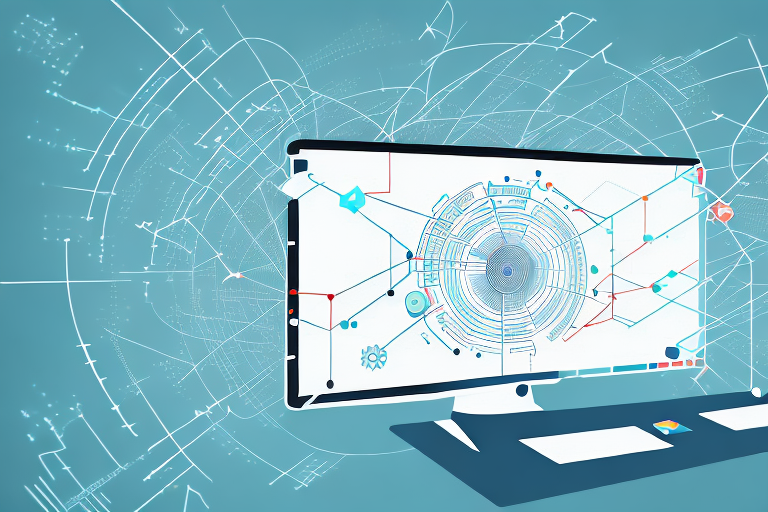Preparing for a Meta System Design Interview? Here Is the RoadMap You Should Know
Introduction
Is Facebook (Meta) your dream company, and do you want a job there as a software developer? If yes, you are at the right place.
Here is an overview of the interview process at Meta.
In the Meta interview, a software engineer is required to clear 6 to 7 rounds of interviews. The first round is a recruiter phone screen, in which the recruiter discusses your qualifications, work experience, skills, etc., on the phone.
The next round is a technical phone screen, in which candidates must solve one or two coding questions.
Then finally you have an onsite interview loop containing 4-5 interviews. Onsite, the candidate gets different rounds for coding, system design, and behavioral interviews.
Does Meta Ask System Design?
Yes, Meta asks the system design questions in their interview process. The technical phone screen round has multiple rounds to evaluate the candidate's technical skills, and system design is one of them. It is essential for Meta to test the system design ability of the candidate, as they will be responsible for designing new systems and handling the current systems.
In this guide, you will learn in-depth about the Meta system design interview process and how to prepare for it.
Understanding the Meta System Design Interview
Generally, system design interviews are considered more complex than coding interviews. However, if you prepared well and you have a good knowledge of the fundamental concepts of system design, you can easily crack it.
Let’s see the step-by-step system design interview process at Meta.
What to expect in a Meta system design interview
In the Meta system design interview, the interviewer will give you any random question on the system design. The level of the problem can be easy, medium, or complex, and it totally depends on the interviewer.
As an interviewee, you are required to design the system and give a satisfactory answer to the interviewer. You are required to keep the basic concepts of the system design in mind and solve the problem. Also, you need to communicate your approach to solving the problem thoroughly.
The time duration for the interview round is 45 minutes to 1 hour, and more in some cases. An interviewer may ask you multiple system design questions based on your ability to solve the questions.
Here are some sample questions that are asked in the Meta system design interview.
- How would you design the URL shortener?
- How would you design an API rate limiter?
- How would you design a social media app?
Approach to solving the system design interview question
Let’s learn the best approach to solving the problem in the Meta system design interview.
- Understanding the requirements – In any interview, whether coding or system design, the first step should be understanding the requirements when the interviewer asks the question. If you have any doubts, you can clarify from the interviewer. Furthermore, you should also know about user traffic, how many requests the app will receive per second, etc., requirements before you start solving the problem.
- Define the basic structure of the system – After knowing the requirements, the next step is to define the system's basic structure. You may prepare a high-level structure in which you define what components are required to build the system, how data flow will work in the system, etc.
- Discuss data modeling – Next, you need to discuss the data modeling. While understanding the system's requirements, you should know what kind of data you require to store in the database. For unstructured data, you can choose a NoSQL database; for structured data, you can choose RDBMS.
- Discuss the system’s scalability – Next, you need to discuss how you will make the application scalable. Here, you are required to discuss extensive user traffic handling and server request handling.
- Performance Optimization – You can also discuss how you can optimize the application's performance using load balancing, CDN, etc.
- Communicate – The most important part of any interview is communication. You need to discuss each part of your solution with your interviewer. You need to tell them why you thought that your solution is valid. If you are stuck anywhere in between, you may ask the interviewer to help you, and they will give you some hints to move ahead.
However, you can also further optimize your solution based on the feedback of the interviewer.
The Meta system design interview is as challenging as the Amazon system design interview, but you can overcome it with effective communication and basic knowledge of system design.
How Meta evaluates system design skills
In the Meta system design interview, the interviewers don’t ask you to find the perfect solution for the system design; they just evaluate you based on your approach. They look at how close you are to the real solution.
Also, they evaluate your knowledge of the fundamental concepts of the system design based on your solutions of complex problems.
The main thing they consider is how you think about building the application's architecture, how you make it scalable, reliable, etc.
The most important part is how effectively you can communicate and represent your ideas to others.
Preparing the Meta Way
In this section, I’ve suggested some resources like books, online courses, and platforms for the further preparation of the Meta system design interview.
Recommended resources and study materials
1. Books
- Fundamentals of Software Architecture – This book is authored by Mark Richards and Neal Ford. It covers all architecture patterns, components, characteristics, and other fundamental system design concepts in depth. It is recommended for beginners and professional software developers to increase their knowledge.
- Designing Data-Intensive Applications: The Big Ideas Behind Reliable, Scalable, and Maintainable Systems - In the system design, handling the data is very important. This book teaches you how you can handle the data efficiently and make your application scalable, reliable, and maintainable.
2. Online Courses
- System Design Interview RoadMap (Design Guru) – The course provides an in-depth understanding of the core concepts of system design. The course also contains various theorems, like the CAP theorem. Also, the course is self-paced so that you can learn at your own pace. Furthermore, the course also guides you on how to handle various situations in your interview.
Key Concepts in System Design to Prepare for Meta Interview
You should know the concepts below to overcome the meta system design interview. Let’s explore each of them.
Review of core system design principles
In this section, I’ve covered some core concepts like availability, caching, reliability, load balancing, etc. However, you can go through the remaining concepts.
1. Availability and Reliability
In the system design, availability refers to the system’s ability to serve requests and remain operational. Reliability refers to the system’s ability to behave as expected and deliver the correct results.
The high availability is necessary for systems like Meta to give a better experience to users. If downtime increases, the number of application users can also decrease.
You should know the load balancing, redundancy, and failover mechanism to achieve high availability. You should focus on the data replication, etc., mechanisms to achieve high reliability.
The multiple servers and replicas of databases can be used to make the system highly available and reliable.
2. Security and Privacy
Security and data privacy is essential for any application. A Meta handles billions of user’s data, so it becomes more crucial for them to handle it securely.
To achieve data privacy, you must understand critical concepts like encryption, decryption, access control, etc.
Also, you should learn about authorization and authentication mechanisms so users can access their data only. To increase the security of the application, you can use the protocols like HTTPS.
3. Caching
Caching is one kind of mechanism used to store the frequently accessed data in the fast-access storage. It increases the performance of the application by serving data faster. The faster application improves the user experience.
The CDN (content delivery network) can be used for the caching mechanism. You can cache the data like images, videos, static web pages, etc.
4. Load Balancing
Load balancing is useful if the system must handle hundreds of requests per second. It is used to distribute the incoming request across multiple servers to balance the server load.
Meta serve resources to billion of users. So, load balancing is important via multiple servers to handle each user's request without missing.
Meta's unique considerations in system design
Meta considers the below unique concepts in their system design interview questions.
- Horizontal Scaling: They sometimes ask how you can design a system such that you can increase the servers when the number of users increases.
- Sharding: The sharding allows breaking down the data into smaller components and distributing them across multiple servers to manage efficiently.
- Global Distribution: They may ask you to explain how you can distribute the data globally so that users can access data with low latency.
- Machine Learning and AI Integration: The meta uses various AI and machine learning algorithms in their applications. So, they can ask questions like how the recommendation system works to serve the personalized content.
- Real-time processing: The Messenger application of Meta allows for real-time communication. So, they also ask questions like how you can process the real-time message queues with low latency.
You can learn 18 system design concepts every engineer should know before the interview.
Top System Design Questions at Meta
In the previous section, you have seen the system design interview process at Meta, what resource you should refer for the preparation, and what concepts you should focus more on. Now, let’s dive into solving the real-time system design question, which was asked in the Meta system design interview in the past years.
1. Design a news feed algorithm
"How would you design the Facebook news feed?" is the most common question asked in the Meta system design interview. For the question, you should consider the below functional and non-functional requirements.
Functional requirements:
- The system should show various posts to people from other people.
- Users should be able to follow other people and Facebook pages.
- Users should be able to comment on the news post.
Non-functional requirements:
- Lowest latency to decrease the lag.
- The system should be able to prepare a news feed for any user according to their followings and trending news.
Points to discuss:
- For the high-level system design, you can discuss how you will allow users to publish the news and generate a news feed for a particular user.
- Discuss implementing the recommendation engine to generate the new feed using the AI and ML algorithms.
- Discuss the data modeling. For example, which database you will choose, like RDBMS or NoSQL, and why you have chosen the particular one.
- Next, discuss how you can do load balancing across multiple servers.
However, the interviewer may ask you to clarify some more factors, and you can also discuss that.
2. Design Messenger
If you have asked ‘how you would design Facebook Messenger or WhatsApp’, you can consider the functional and non-functional requirements below. You may also ask the interviewer for more requirements in the system.
Functional requirements:
- The system should allow a one-to-one encrypted algorithm.
- The system should also support the group chat conversation.
- The system should store the chat history.
Non-functional requirements:
• Design a highly available system. • Design a highly consistent system so users can see messages in the same order. • High latency is required for the real-time system design.
Points to discuss:
- Discuss how clients will maintain a connection with the server.
- Discuss which protocols you will use for the communication. For example, you can discuss that TCP can be used as packet loss is not allowed.
- Next, discuss implementing the encryption and decryption algorithm to provide an end-to-end description.
- Discuss data modeling and how you will store the chat history in the database.
- Discuss how you will handle the multiple requests simultaneously and what will happen if both users try to send messages simultaneously. How will you make it consistent?
- Discuss how the system’s server will send messages to offline users.
3. Design an Instagram
If you have been tasked with designing a system similar to Instagram, you can consider the functional and non-functional requirements.
Functional requirements:
- Users should be able to upload images, long videos, and short videos.
- Users should be able to connect with other users.
- Users should be able to go live with multiple users.
Non-functional requirements:
- Prepare a highly reliable system so users don’t lose a fraction of uploaded media.
- Prepare a highly available and consistent system.
Points to discuss:
- Discuss storing the user’s data like posts, videos, usernames, passwords, profile descriptions, etc. in the database. You may use the relational databases.
- Discuss implementing the recommendation algorithm.
- Discuss using UDP protocol for live streaming.
- Discuss implementing CDN for the low latency.
4. Design Ticketmaster
In the Meta system design interview, the interviewer may ask you how you would design an online ticket platform. you may follow the approach below to solve the problem. The online ticket platforms allow users to book movie tickets.
Functional requirements:
- The system should show all cinemas with location.
- Allowing users to register on the portal and book a ticket in any cinema for a particular movie show.
- Don’t allow booking already booked seats.
- Users should be able to reserve a sheet for a particular time before booking.
Non-functional requirements:
- Need to make the app secure.
- Handle more than 1 booking request for the same sit simultaneously.
Points to discuss:
- Discuss implementing the authentication and authorization to access users to tickets they booked only.
- Discuss the database you can use to store the cinema data like location, already booked seats, and movie shows. Also, discuss how you would maintain user data in the database.
- Also, discuss using the protocols like HTTPs for security reasons.
- Discuss how you would block one user for a fraction of the time if two user tries to book the same seat simultaneously.
- Discuss implementing the caching mechanism to reserve the seat for a particular time before booking to make the application more concurrent.
How to structure your preparation plan
Here is the step-by-step preparation plan that you should follow for your Meta system design interview. Even if you don’t know system design, follow the steps below to start preparation from scratch.
Step 1: Learn the Fundamentals of system design
The first step to preparing for the system design interview is learning the fundamental concepts of the system design. You can use the online courses, books, etc., recommended in this guide to clear fundamental concepts of the system design. However, you can also choose another course or book to prepare if you find the best.
Step 2: Practice real-time questions
After learning the fundamental concepts of system design, you should practice solving the real-time complex questions that Meta asks in past interviews.
You can refer to the Groking System Design Interview course by Design Guru to practice real-time questions with solutions.
Step 3: Mock Interviews and Practice
The next step is to practice with system design mock interviews, in which you can solve the questions in a specific time, like real-time interviews. Also, you can ask your mentors to conduct your mock interviews.
Step 4: Stay informed
Before going for the interview, you should do some research about current industry and technology trends like artificial intelligence, machine learning, virtual reality, social networking, etc.
Also, it would help if you do company research, like what technology Meta is working on and about company products.
Tips for Acing Your Meta System Design Interview
In tech giant companies like Meta, interviewers don’t just evaluate your technical skills, but they also test your mindset of accepting the challenges and finding the solutions for complex problems.
Here, I’ve given some tips that you need to consider before your interview.
1. Preparing your mindset for success
Consider the tips below.
- Be confident: Take a deep breath and stay calm. You should be confident in your ability and knowledge. Confidence helps you communicate with the interviewer effectively. Don’t be nervous even if you will give your first interview.
- Problem-solving attitude: Whenever an interviewer asks any system design question, you should understand the problem first. After that, you must ask him about the requirements. Next, you can break down the complex problem into small tasks and solve each. It shows your eagerness to solve problems.
- Take feedback: You should always take feedback from the interviewer. If the interviewer gives you any suggestion, you should adapt it and improve your solution. In short, you should be flexible with your solution approach.
- Practice whiteboarding: If you are allowed to draw diagrams on the whiteboard, you should do that. It will help the interviewer to visualize your approach, and they will understand in a better way.
- Practice, practice, practice: Before you go for the interview, you should solve more and more practice questions to build confidence.
2. Dressing appropriately for Meta-interviews
Before you go for the Meta system design interview, it is important to dress appropriately. You can wear casual clothes, with a watch, and shoes. Try to be simple and look professional.
You may also research the culture of Meta and dress accordingly.
3. Time management and communication during the Interview
In the interview, it is important to manage time and communicate effectively.
If you don’t know how to approach the question’s solution, you may ask the interviewer for feedback. They will definitely help you to start but don’t waste time if you don’t know the answer. It might happen that you know the solutions to all the questions that the interviewer is going to ask next.
Positive communication is the key to success. Even if you are thinking about the solution to the problem, you should speak your thoughts, also. So the interviewer can know your approach to solving the problem and evaluate your skills better.
Furthermore, listen actively to the interviewer. So you can understand the problem and give a better answer. It makes more of an impression if you summarize your solution at the end.
Conclusion
The Meta system design interview can be cracked with the above tips. You should be ready with the knowledge of the fundamental concepts of the system design before your interview. Also, you should have done the practice by solving the past interview questions given in this guide and others available on the internet.
For further resources, you can enroll in the Grokking the Advance System Design Interview to get advanced knowledge of system design. Also, read Mastering the System Design Interview: A Complete Guide.
For a fully instructor led interview preparation program, take a look at Interview Preparation Bootcamp.



